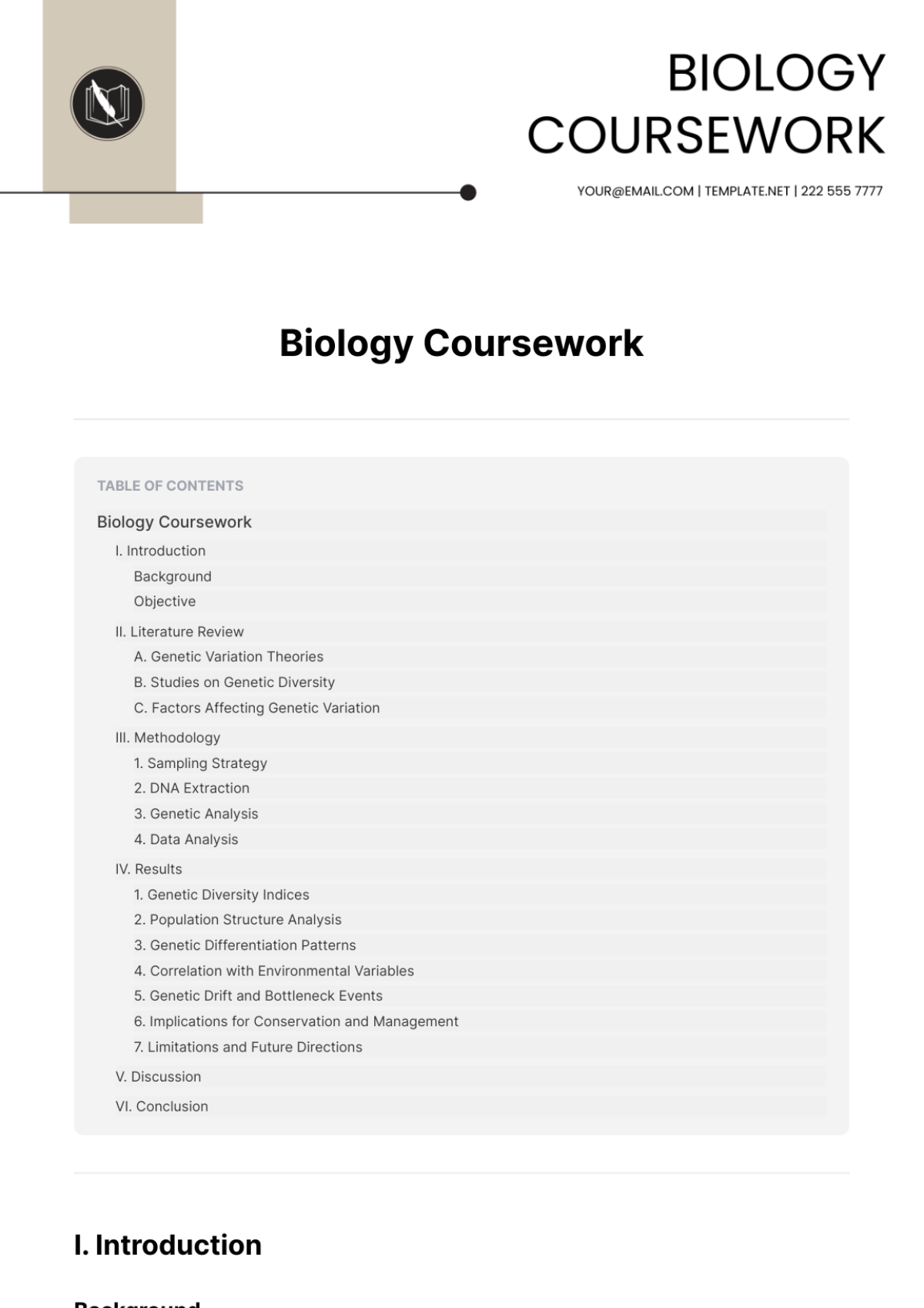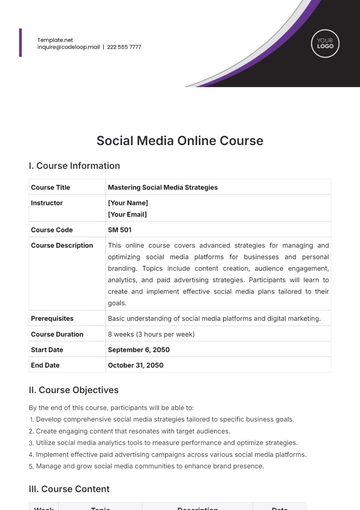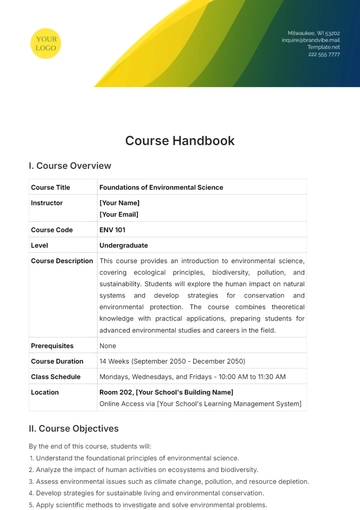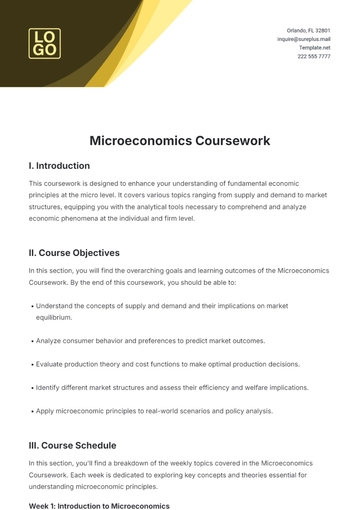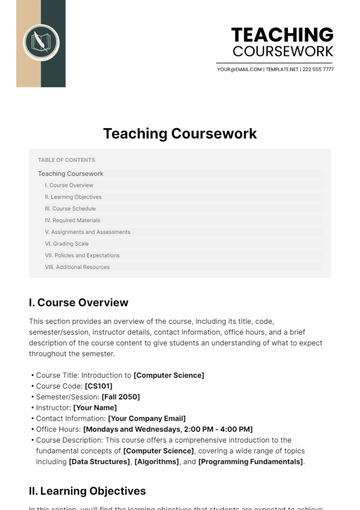Biology Coursework
I. Introduction
Background
Drosophila melanogaster is a model organism extensively used in genetics research due to its short generation time, large brood size, and well-characterized genome. Understanding the genetic variation within and among Drosophila melanogaster populations is crucial for elucidating evolutionary processes, adaptation to changing environments, and the effects of human activities such as urbanization on biodiversity.
Objective
This study aims to assess the genetic variation in Drosophila melanogaster populations from urban and rural areas, analyze the factors contributing to genetic differentiation among populations, and discuss the implications for urban ecology and conservation genetics. By examining the genetic consequences of urbanization on Drosophila melanogaster populations, we can gain valuable insights into the dynamics of urban biodiversity and inform evidence-based conservation efforts.
II. Literature Review
A. Genetic Variation Theories
Mutation: Explore the role of mutation in generating genetic variation within populations. Discuss the types of mutations (e.g., point mutations, insertions, deletions) and their frequency in Drosophila melanogaster.
Genetic Drift: Examine the effects of genetic drift on allele frequencies in small populations of Drosophila melanogaster. Discuss how random fluctuations can lead to loss of genetic diversity and fixation of alleles.
Natural Selection: Investigate the impact of natural selection on genetic variation in Drosophila melanogaster populations. Highlight examples of selective pressures (e.g., predation, competition, environmental changes) and their effects on allele frequencies.
B. Studies on Genetic Diversity
Population Genetics: Summarize seminal studies in Drosophila melanogaster population genetics, such as those by Dobzhansky and Muller. Discuss key findings regarding genetic variation, gene flow, and speciation processes.
Evolutionary Biology: Review recent research in evolutionary biology that utilizes Drosophila melanogaster as a model organism. Highlight studies on molecular evolution, adaptation, and genetic mechanisms underlying phenotypic diversity.
C. Factors Affecting Genetic Variation
Habitat Fragmentation: Explore the effects of habitat fragmentation on gene flow and genetic structure in Drosophila melanogaster populations. Discuss how fragmented landscapes can lead to isolation and genetic differentiation among subpopulations.
Urbanization: Investigate the impact of urbanization on genetic diversity in Drosophila melanogaster. Discuss the effects of urban heat island effects, pollution, and habitat loss on population genetics and adaptation.
Climate Change: Examine how climate change influences genetic variation and adaptive responses in Drosophila melanogaster. Discuss research on thermal tolerance, phenological shifts, and evolutionary responses to changing environmental conditions.
III. Methodology
1. Sampling Strategy
Select 10 Drosophila melanogaster populations from urban and rural areas across [COUNTRY NAME].
Collect 20 individuals from each population, ensuring random sampling.
2. DNA Extraction
Extract genomic DNA from fly thorax tissue using a commercial DNA extraction kit.
Label DNA samples according to population and individual ID.
Store DNA samples at -80°C for long-term preservation.
3. Genetic Analysis
Amplify microsatellite loci using PCR with species-specific primers.
Analyze PCR products using capillary electrophoresis to determine allele sizes.
Calculate allele frequencies and genetic diversity indices using software packages such as GenAlEx or STRUCTURE.
4. Data Analysis
IV. Results
1. Genetic Diversity Indices
Variation in genetic diversity was observed among populations, with rural populations displaying higher diversity compared to urban ones.
This suggests the potential impacts of urbanization on genetic variation.
2. Population Structure Analysis
Population structure analysis indicated distinct genetic clusters, with urban populations showing greater differentiation than rural ones.
This points to limited gene flow in urban environments.
3. Genetic Differentiation Patterns
Significant genetic differentiation was found among populations, influenced by factors like geographic distance and habitat type.
The presence of private alleles in certain populations suggests local adaptation.
4. Correlation with Environmental Variables
Correlating genetic data with environmental variables such as temperature, precipitation, and habitat quality provides insights into the drivers of genetic variation.
Spatial analysis techniques highlight the influence of landscape features and human disturbances on population genetic structure.
5. Genetic Drift and Bottleneck Events
6. Implications for Conservation and Management
7. Limitations and Future Directions
V. Discussion
The results of this study shed light on the genetic dynamics of Drosophila melanogaster populations in urban and rural environments.
Urban populations displayed lower genetic diversity compared to rural ones, likely due to habitat fragmentation and human disturbances. The analysis also revealed distinct genetic clustering between urban and rural populations, indicating significant genetic differentiation influenced by urbanization.
These findings have implications for biodiversity conservation in urban areas. Conservation efforts should focus on preserving natural habitats and maintaining landscape connectivity to mitigate the genetic impacts of urbanization on wildlife populations.
Integrating genetic approaches into urban planning can help develop strategies for sustainable development and biodiversity conservation. Further research is needed to understand the interactive effects of urbanization and genetic factors on wildlife populations.
VI. Conclusion
This study demonstrates significant genetic variation within Drosophila melanogaster populations, with urbanization playing a role in shaping population structure. Understanding the genetic consequences of urbanization is essential for effective conservation and management strategies.
Coursework Templates @ Template.net
